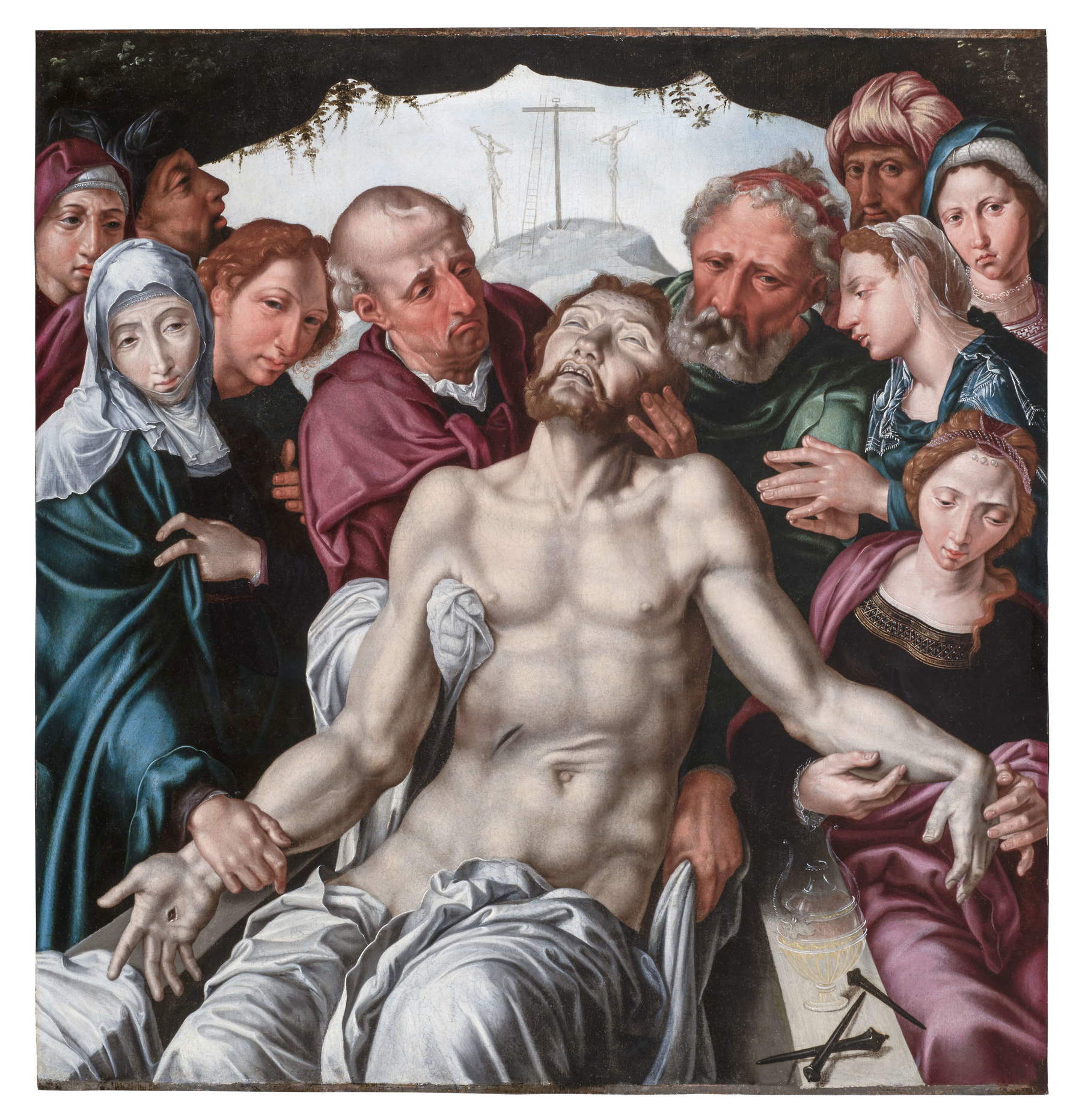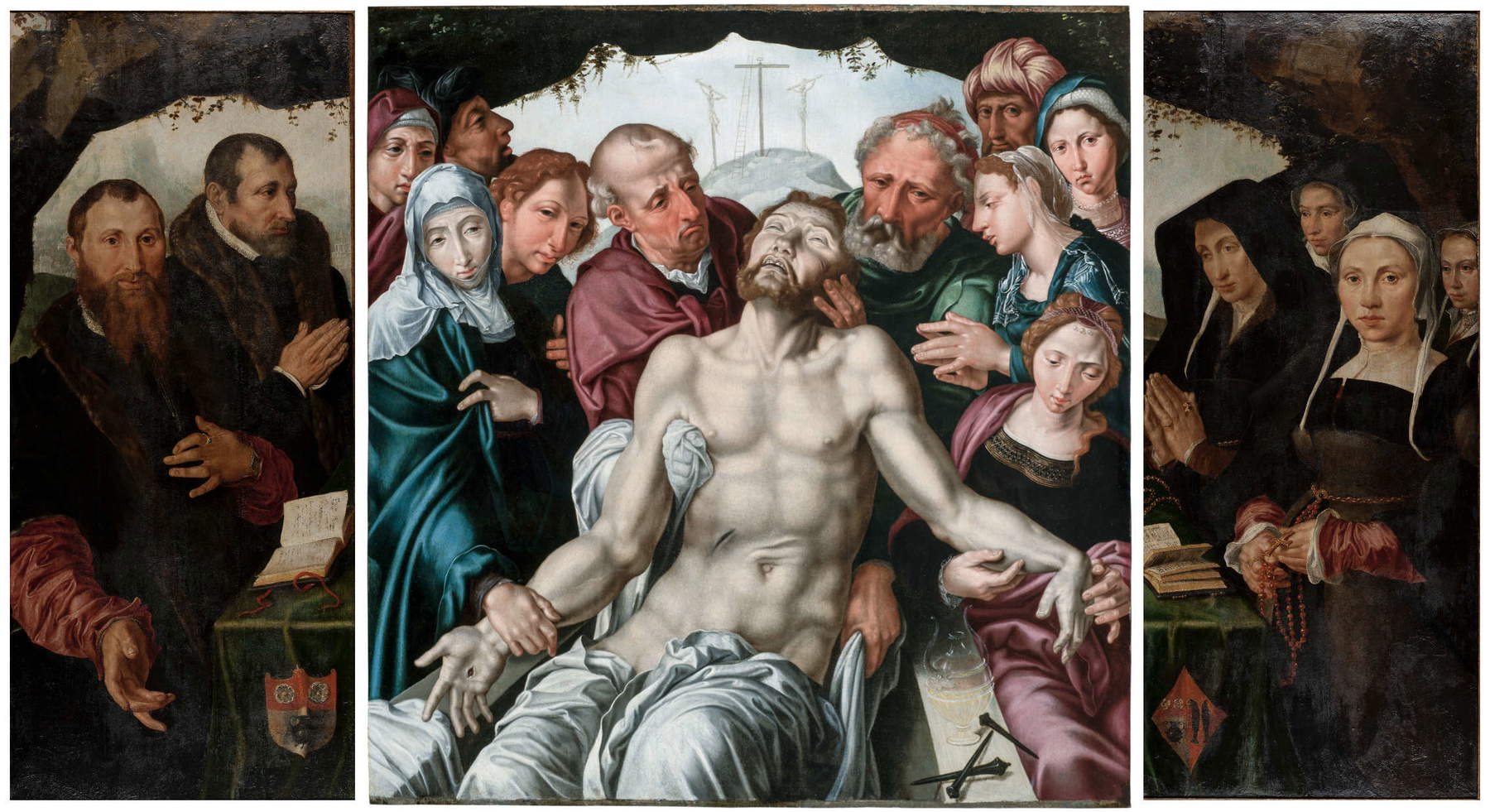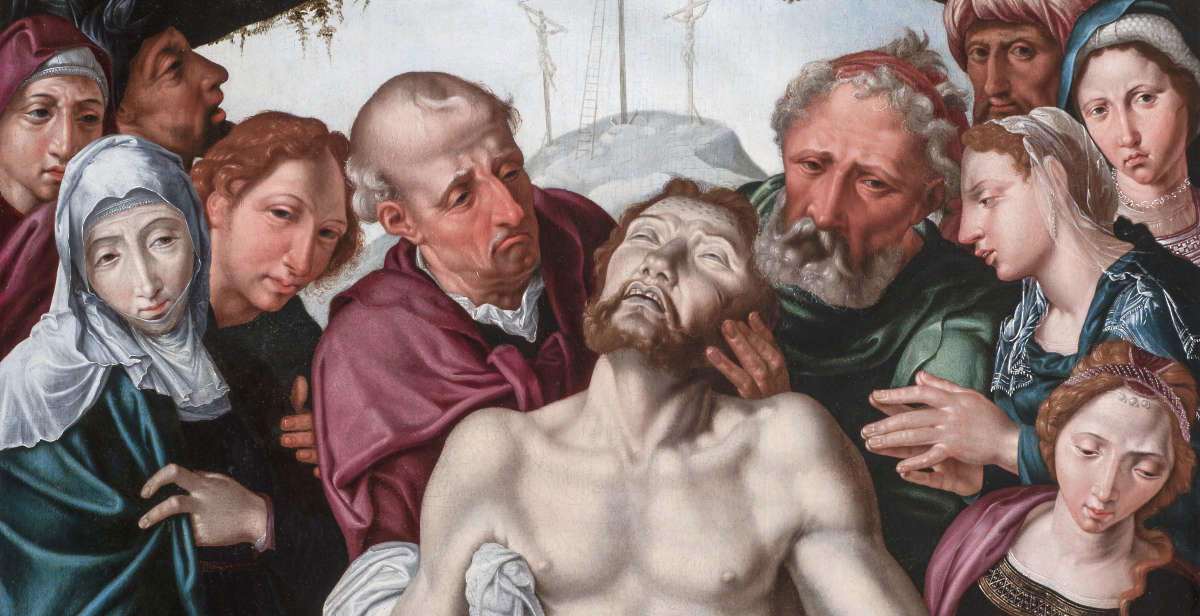After centuries of separation, the Worcester Art Museum (WAM) in Massachusetts , United States, has succeeded in an extraordinary feat: to reunite for the first time since its separation a 16th-century triptych by the Dutch painter Maerten van Heemskerck (Heemskerck, 1498 - Haarlem, 1574), an important figure of the Northern Renaissance. In fact, the museum purchased the triptych’s central panel , a majestic Deposition of Christ in the Tomb, from the Turin gallery Caretto & Occhinegro, which finally allows the original side panels, long on loan to the museum from the Selldorff family, to be displayed together. The complete work will be on view beginning this summer in the American museum’s galleries devoted to European art, and the reunion will mark a landmark moment in the history of 16th-century Dutch art.
“Discoveries of Old Master works, along with new attributions, are still being made today, although rarely at this level of quality,” said Matthias Waschek, director of the museum. “It takes insight and detective work on the part of connoisseurs, with specialists authenticating the attribution and conservators revealing details hidden under centuries of dirt. We are grateful to Heemskerck expert Peter van den Brink, who recognized the connection between donor panels on long-term loan to the Museum and this newly acquired center panel. Thanks to the gallerists’ commitment to placing the work in a museum and Claire Whitner’s initiative, we can reunite this triptych after more than 250 years-an extraordinary moment that enriches our art-historical narrative.”
“It is an immense pleasure and honor for us to have contributed to the reconstruction of this triptych,” say Massimiliano Caretto and Francesco Occhinegro, owners of the eponymous gallery. “The Worcester Museum is the best destination that a work of such importance could reach, and we are confident that this happy conclusion will remain as a cultural contribution to the enjoyment of art for future generations.”


The central panel of the work depicts the Gospel scene of Christ’s deposition in the tomb, one of the most significant subjects in the Christian artistic tradition, dear to Maerten van Heemskerck’s pictorial production. The work shows Jesus’ body as it is gently lowered into the tomb, surrounded by several figures: the Virgin Mary, Nicodemus, Joseph of Arimathea, and Mary Magdalene are the main ones. In the background stands Calvary with the now-empty cross in the center, while the two side crosses still bear the bodies of the two thieves, a detail that adds to the pathos of the composition.
Maerten van Heemskerck, known for his ability to blend the influence of Italian art with the Flemish tradition, devoted himself to the theme of the deposition several times throughout his career. In this panel, in particular, the effects of his sojourn in Italy strongly emerge: indeed, the dynamism of the scene and the anatomical rendering of the bodies reflect the impact of Michelangelo’s frescoes in Rome, as well as the influence of the Venetian painting of Giovanni Bellini and Andrea Mantegna. His distinctive trait, combining plastic sense and theatricality, is here enhanced in every detail, from the sculpted musculature of Christ to the intense faces of the grieving characters.
The reunification of the triptych was made possible through a fortunate interweaving of research and collaboration. The two side panels, depicting members of the commissioning family at prayer, with rocky backgrounds and landscapes that connect perfectly with the central scene, had been separated from the main panel in undocumented times. Today they are part of the Selldorff family’s collection, but their past tells a story of loss and redemption: they were in fact from the collection of Richard Neumann, an Austrian industrialist of Jewish descent and refined art collector whose works were confiscated by the Nazis after the Anschluss and dispersed for decades. It was not until 2011 that the panels were returned to Neumann’s heirs, including Tom Selldorff, who now has them on long-term loan to the Worcester museum.
With the addition of the central panel, the work now takes on a unified artistic and historical dimension. According to scholars who have analyzed the painting, the central panel was likely on display in Maerten van Heemskerck’s studio as an example of his style, thus allowing patrons to order custom side panels to be juxtaposed. The overall composition thus suggests a modular conception of the artwork, common in northern Europe in the 16th century: that is, the painter offered clients an iconographic basis to be supplemented with specific elements, such as portraits of the commissioning family at prayer.
The Worcester Art Museum, founded in 1896, has stood out for decades for its innovative approach to museology and education. The WAM’s permanent collection covers a time span from 3000 B.C. to the present day, with artworks from around the world. Through educational programs, collaborations with schools, thematic exhibitions and inclusive tours, the museum strives to engage diverse audiences and demonstrate the everyday relevance of art in contemporary society. In this context, the arrival of van Heemskerck’s triptych fits well with the museum’s mission. For visitors, the opportunity to admire a complete sixteenth-century triptych, which has traversed wars, looting, and private collections to reach the present day, represents a journey through time and European historical consciousness. This acquisition also demonstrates how museums, far from being merely static custodians of works of art, can become dynamic players in the recovery and enhancement of the world’s artistic heritage.
“This acquisition strengthens our already remarkable collection of early Flemish and Northern Renaissance painting,” said Claire C. Whitner, director of curatorial affairs and curator of European art at the museum. “Reuniting the Deposition with the side panels allows us to present the triptych as it would have appeared in the 16th century-an outstanding achievement for our museum and a rare sight in American collections.”
 |
| Worcester Art Museum brings together an extraordinary 16th-century triptych by Maerten van Heemskerck |
Warning: the translation into English of the original Italian article was created using automatic tools. We undertake to review all articles, but we do not guarantee the total absence of inaccuracies in the translation due to the program. You can find the original by clicking on the ITA button. If you find any mistake,please contact us.